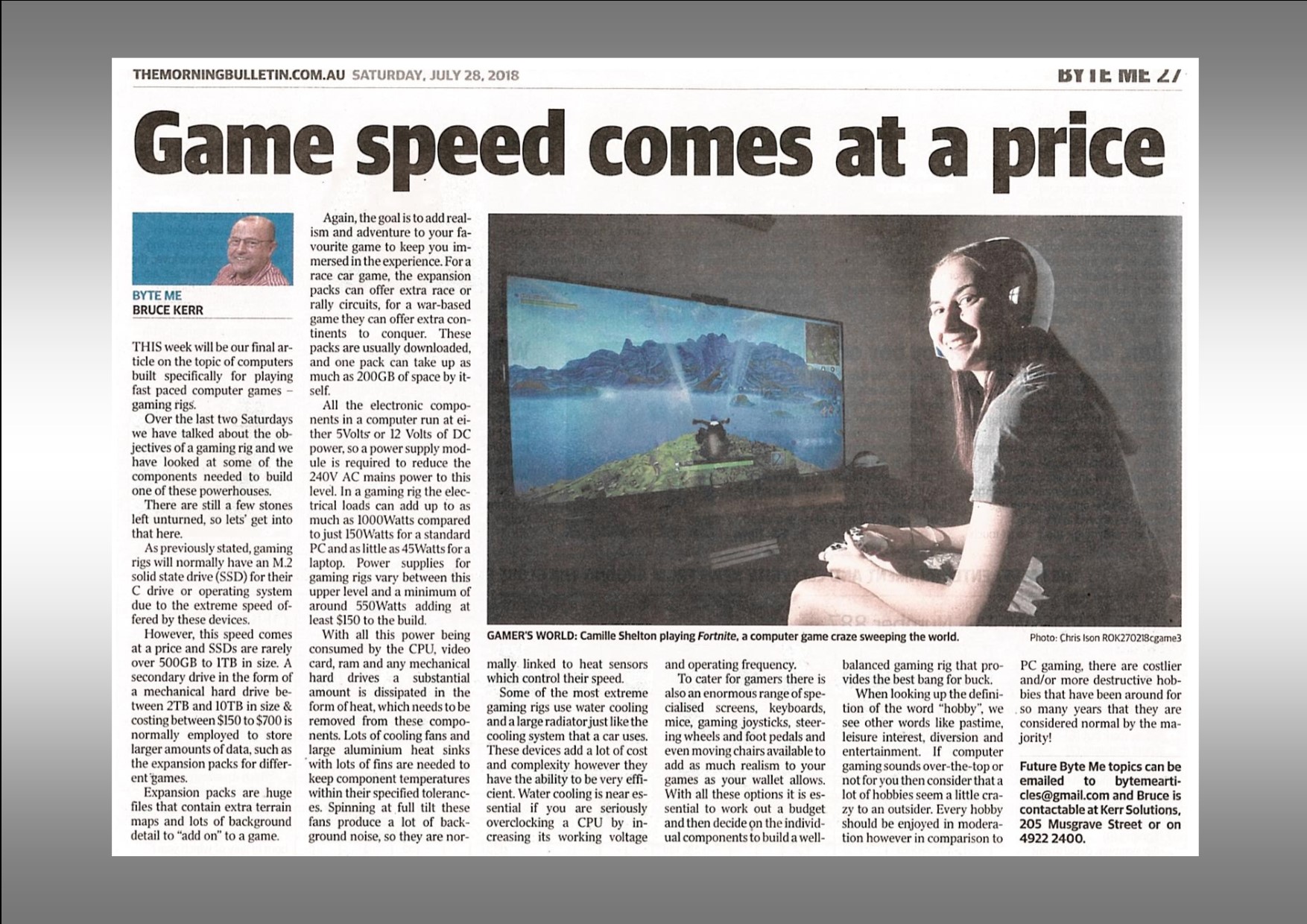28th July 2018
Game Speed Comes at a Price
This week will be our final article on the topic of computers built specifically for playing fast paced computer games – gaming rigs. Over the last two Saturday’s we have talked about the objectives of a gaming rig and we have looked at some of the components needed to build one of these powerhouses. There are still a few stones left unturned, so lets’ get into that here.
As previously stated, gaming rigs will normally have an M.2 solid state drive (SSD) for their ‘C’ drive or operating system due to the extreme speed offered by these devices. However, this speed comes at a price and SSD’s are rarely over 500GB to 1TB in size. A secondary drive in the form of a mechanical hard drive between 2TB and 10TB in size & costing between $150 to $700 is normally employed to store larger amounts of data, such as the expansion packs for different games.
Expansion packs are huge files that contain extra terrain maps and lots of background detail to ‘add on’ to a game. Again, the goal is to add realism and adventure to your favourite game to keep you immersed in the experience. For a race car game, the expansion packs can offer extra race or rally circuits, for a war-based game they can offer extra continents to conquer. These packs are usually downloaded, and one pack can take up as much as 200GB of space by itself.

All the electronic components in a computer run at either 5Volts or 12 Volts of DC power, so a power supply module is required to reduce the 240V AC mains power to this level. In a gaming rig the electrical loads can add up to as much as 1000Watts compared to just 150Watts for a standard PC and as little as 45Watts for a laptop. Power supplies for gaming rigs vary between this upper level and a minimum of around 550Watts adding at least $150 to the build.
With all this power being consumed by the CPU, video card, ram and any mechanical hard drives a substantial amount is dissipated in the form of heat, which needs to be removed from these components. Lots of cooling fans and large aluminium heat sinks with lots of fins are needed to keep component temperatures within their specified tolerances. Spinning at full tilt these fans produce a lot of background noise, so they are normally linked to heat sensors which control their speed.
Some of the most extreme gaming rigs use water cooling and a large radiator just like the cooling system that a car uses. These devices add a lot of cost and complexity however they have the ability to be very efficient. Water cooling is near essential if you are seriously overclocking a CPU by increasing its working voltage and operating frequency.
To cater for gamers there is also an enormous range of specialised screens, keyboards, mice, gaming joysticks, steering wheels and foot pedals and even moving chairs available to add as much realism to your games as your wallet allows. With all these options it is essential to work out a budget and then decide on the individual components to build a well-balanced gaming rig that provides the best bang for buck.
When looking up the definition of the word ‘hobby’, we see other words like pastime, leisure interest, diversion and entertainment. If computer gaming sounds over-the-top or not for you then consider that a lot of hobbies seem a little crazy to an outsider. Every hobby should be enjoyed in moderation however in comparison to PC gaming, there are costlier and / or more destructive hobbies that have been around for so many years that they are considered normal by the majority!
Future Byte Me topics can be emailed to [email protected] and Bruce is contactable at Kerr Solutions, 205 Musgrave Street or on 49 222 400.
For more advice and assistance from Kerr Solutions, like and follow us on Facebook
